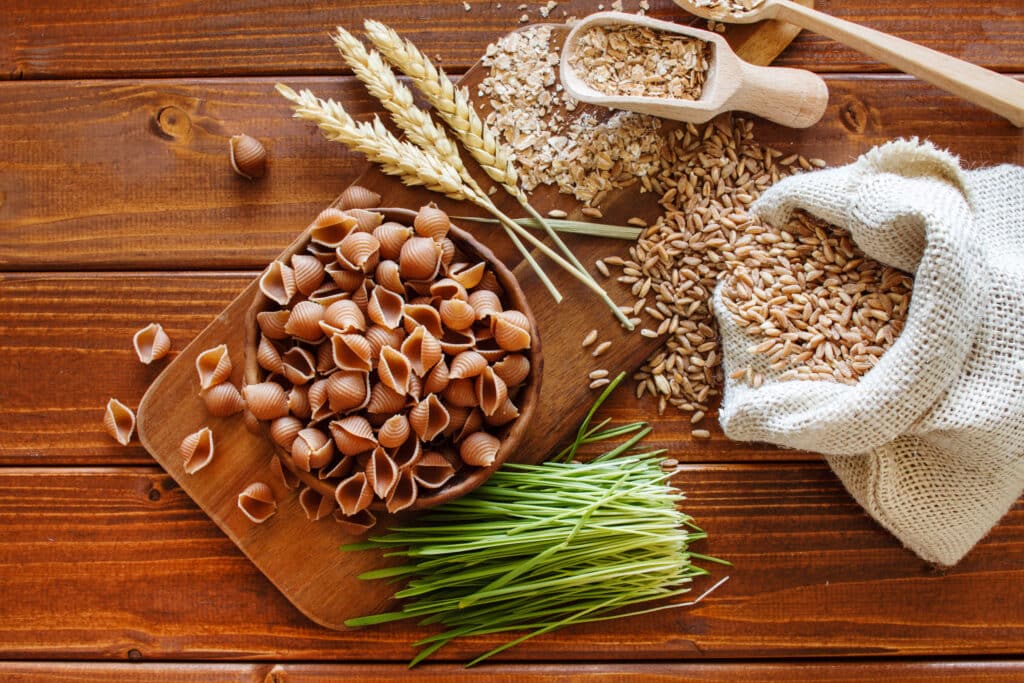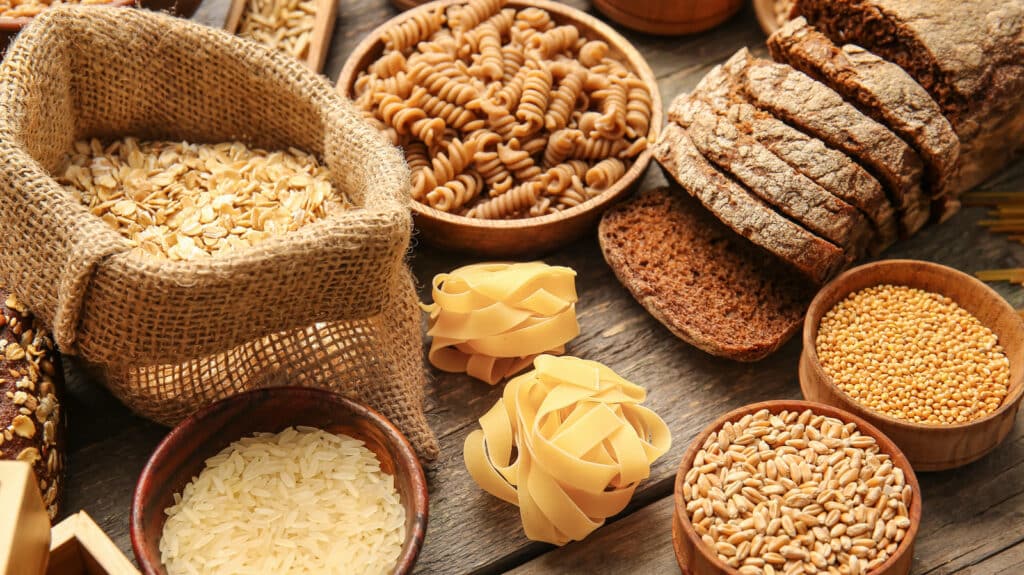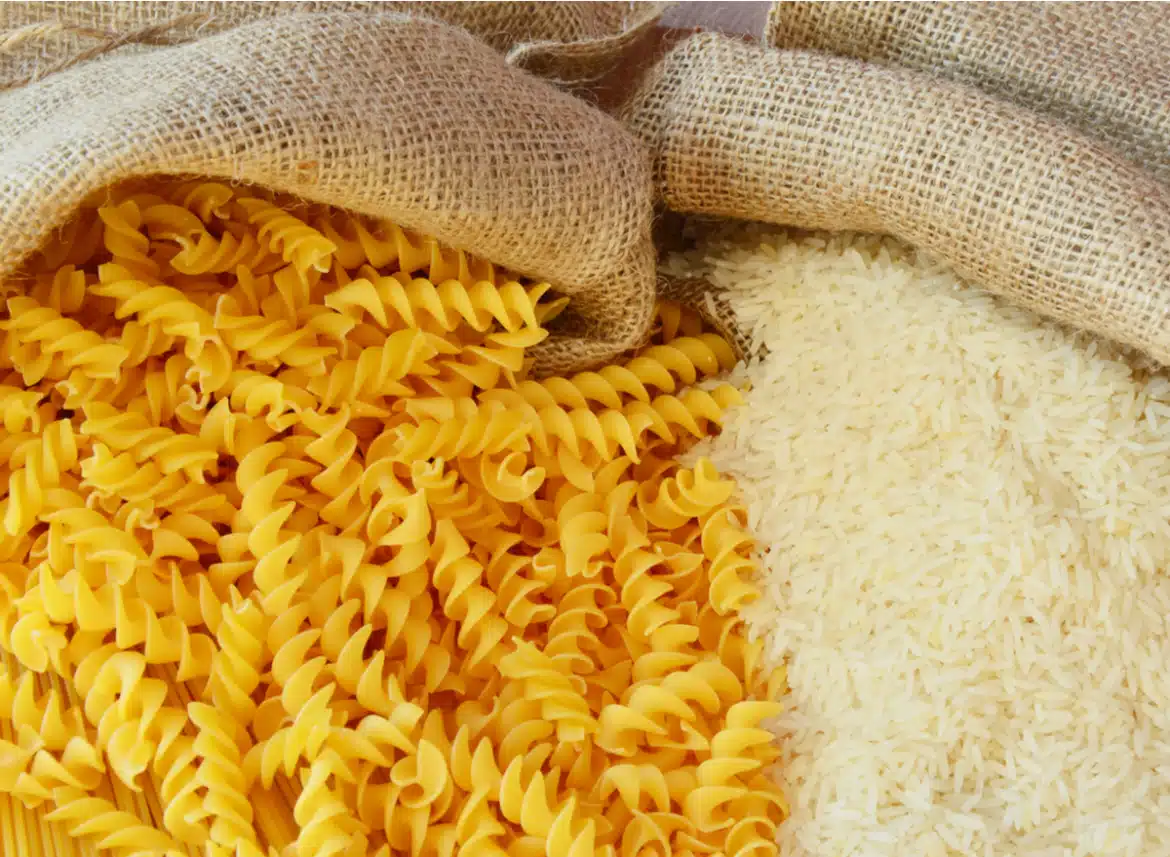Introduction
Is Pasta Or Rice Better For Weight Loss:When it comes to weight loss, dietary choices play a pivotal role in achieving and maintaining a healthy body weight. Among the numerous food options available, pasta and rice are two staple carbohydrates that often find themselves at the center of the debate. Both are versatile, easy to prepare, and form the basis of many delicious dishes from around the world. However, determining which is better for weight loss can be a complex matter that depends on various factors, including personal preferences, portion control, and overall dietary habits.
In this exploration of the pasta-versus-rice dilemma, we will delve into the nutritional profiles of these two carbohydrate sources, considering their impact on satiety, blood sugar levels, and overall calorie consumption. Additionally, we will examine how cultural and culinary factors influence people’s choices and attempt to provide a balanced perspective on which option may be more conducive to weight loss, emphasizing that the best approach ultimately hinges on individual needs and goals.
So, whether you’re a pasta aficionado or a rice enthusiast, read on to make informed decisions about your weight loss journey.The battle between pasta and rice in the realm of weight loss has been a topic of debate for health-conscious individuals seeking to shed excess pounds. Pasta, often associated with Italian cuisine, is cherished for its comforting texture and versatility in creating an array of dishes, from creamy Alfredo to zesty marinara. On the other hand, rice, a dietary staple in many Asian cultures, offers numerous varieties like brown, white, and wild, each with its own unique characteristics.

Is pasta good for you to lose weight?
Pasta can be a part of a healthy and balanced diet for weight loss, but it depends on the type of pasta, serving size, and preparation method. Opt for whole-grain pasta, watch your portions, and pair it with plenty of vegetables and lean protein. Consequently, avoid creamy sauces and high-calorie toppings.
Here’s how to make pasta work for your weight loss goals:
Choose Whole-Grain Pasta: Whole-grain pasta is a better choice than refined pasta because it’s higher in fiber and nutrients, making you feel fuller for longer. The fiber content helps stabilize blood sugar levels and reduces the chances of overeating.
Control Portion Sizes: The key to incorporating pasta into a weight loss diet is portion control. Measure your pasta servings to avoid overeating. A typical serving size is about 1/2 to 1 cup of cooked pasta, depending on your individual needs.
Add Vegetables: Boost the nutritional value of your pasta dish by adding plenty of vegetables. They provide essential vitamins, minerals, and fiber while keeping the calorie count in check. Options like broccoli, spinach, and cherry tomatoes work well.
Include Lean Protein: Adding lean protein sources like grilled chicken, turkey, tofu, or beans to your pasta can enhance its satiety factor. Protein helps you feel full and satisfied, reducing the urge to snack later.
Watch the Sauces: Avoid heavy, creamy sauces that are high in calories and saturated fats. Opt for tomato-based sauces or olive oil-based dressings with herbs and spices for flavor.
Can I lose weight eating pasta and rice?
Rice, Bread and Pasta in a Weight Loss DietCarbs including rice, bread, pasta, potato and cereal are low fat, ideal for weight loss diets. Dietitian Juliette Kellow shows how to use carbohydrates to lose weight.Yes, you can lose weight while including pasta and rice in your diet. Carbohydrates, including rice, bread, pasta, and cereal, can be part of a healthy weight loss plan when consumed mindfully and in appropriate portions.
Here’s how to incorporate these foods into your weight loss strategy:
Choose Whole Grains: Opt for whole-grain varieties of rice, bread, and pasta whenever possible. Whole grains are higher in fiber and nutrients compared to refined grains, which can help you feel full and satisfied for longer.
Control Portion Sizes: Pay attention to portion sizes to avoid excessive calorie intake. Use measuring cups and scales to gauge your portions accurately.
Balance with Protein and Vegetables: Include lean protein sources like poultry, fish, tofu, or legumes in your meals with rice or pasta. Additionally, load up on vegetables to increase the volume of your meal without adding many calories. This combination provides a balanced and satisfying meal.
Mindful Eating: Eat slowly and savor your food. Mindful eating can help you recognize when you’re full and prevent overeating.
Limit High-Calorie Sauces and Toppings: Be cautious with high-calorie sauces, creamy dressings, or excessive cheese. These can add extra calories to your meal. Opt for lighter, flavorful sauces and toppings.
Which pasta is best for weight loss?
In fact, whole wheat or whole grain pasta is the best option for weight loss as whole wheat pasta takes longer to digest than pasta made from refined flour. Slower digestion means blood sugar will rise slowly after consumption, preventing your body from storing excess fat.Whole wheat or whole grain pasta is indeed an excellent choice for weight loss.
Here’s Why it’s considered the best pasta option for those looking to manage their weight:
Higher Fiber Content: Whole wheat or whole grain pasta contains more fiber than traditional refined pasta. Fiber is essential for weight loss because it promotes feelings of fullness and reduces hunger, helping you eat less overall.
Slow Digestion: The higher fiber content in whole wheat pasta slows down digestion. This gradual digestion leads to a more stable and gradual rise in blood sugar levels, preventing rapid spikes and crashes. This can help regulate appetite and reduce the likelihood of overeating.
Nutrient Density: Whole wheat pasta is more nutrient-dense than refined pasta. It contains vitamins, minerals, and antioxidants that provide essential nutrients for overall health.
Lower Glycemic Index: Whole wheat pasta typically has a lower glycemic index (GI) compared to refined pasta. Foods with a lower GI are less likely to cause rapid fluctuations in blood sugar levels, which can be beneficial for weight management.
Satiety: Because of its fiber content and slower digestion, whole wheat pasta can help you feel fuller for a longer period, reducing the temptation to snack between meals.
Is rice or pasta fattening?
The main differences between refined (white) pasta and white rice are in the amount of calories, fiber, and protein in each. Pasta contains more calories, more fiber, and more protein than rice. However, many healthier varieties of pasta and rice are available that are more nutritious than their refined counterparts.Both rice and pasta can be part of a balanced diet, and whether they are fattening depends on several factors, including portion size, type, and how they are prepared.
Here’s a breakdown of the key factors to consider:
Calorie Content: Refined white pasta generally contains more calories per serving compared to white rice. However, calorie content alone doesn’t determine whether a food is fattening. It’s more about portion control and overall calorie intake throughout the day.
Fiber Content: Whole grain or brown rice contains more fiber than white rice. Similarly, whole wheat or whole grain pasta has more fiber than refined white pasta. Fiber promotes fullness and can help prevent overeating, making it a valuable component of a weight-conscious diet.
Protein Content: Pasta typically has more protein than rice, especially when you compare whole grain versions. Protein is important for muscle maintenance and can also aid in satiety, helping you feel full for longer.
Preparation Method: How you prepare rice or pasta can significantly impact their calorie and nutrient content. Boiling or steaming with minimal added fats or sauces is a healthier option compared to frying or drowning them in creamy sauces, which can add a substantial number of calories.
Variety Matters: There are numerous types of rice and pasta available, including brown rice, wild rice, whole wheat pasta, and gluten-free options. Choosing these healthier varieties can provide more nutrients and contribute to a balanced diet.
Is rice a pasta or grain?
Foods made from wheat, rice, oats, cornmeal, barley, or another cereal grain is a grain product. Bread, pasta, breakfast cereals, grits, and tortillas are examples of grain products. Foods such as popcorn, rice, and oatmeal are also included in the Grains Group.Rice is a cereal grain, not a pasta. It belongs to the same family of cereal grains as wheat, oats, and corn. Rice is a staple food in many parts of the world and is typically consumed as a whole grain or processed into various rice-based products like rice cakes, rice flour, and rice noodles. Pasta, on the other hand, is typically made from wheat flour and water, and it is a distinct type of grain-based product. Both rice and pasta fall under the broader category of grain products, but they are different grains and have different culinary uses.
What type of pasta is rice?
Risoni (pronounced ree-soh-nee) looks like large grains of rice but is actually a type of pasta. It’s also known as risi (which is Italian for rice) or pasta a riso, and is sometimes referred to as orzo, although this tends to be slightly larger.Risoni is a type of pasta that resembles large grains of rice in appearance. It is often used in various dishes and can be cooked in a similar manner to rice, but it is indeed a pasta variety. Risoni is also known by other names, including “risi” (Italian for rice) or “pasta a riso.” It may occasionally be referred to as “orzo,” although orzo is typically slightly larger in size and has a different shape. Risoni is a versatile pasta that can be used in soups, salads, or as a side dish, and its rice-like appearance makes it a unique and visually appealing addition to various recipes.
How much pasta for weight loss?
Meanwhile, the answer to the great pasta conundrum is two handfuls of dried pasta for a portion, or if you’ve already cooked it, the amount that fits in two hands cupped together. It’s the same for rice, and if you opt for a baked potato instead then one the size of your fist will do it.When it comes to pasta or any carbohydrate portion for weight loss, portion control is crucial. A common guideline for pasta or rice is to aim for a portion that fits in two cupped hands or is about the size of a tennis ball or your fist. This typically amounts to about 1/2 to 1 cup of cooked pasta or rice, depending on your individual dietary needs and calorie goals.
Here are some general tips for pasta or rice portion control in a weight loss context:
Measure: Use measuring cups or a food scale to ensure accurate portion sizes.
Consider Your Overall Diet: The portion size of pasta or rice should fit within your overall daily calorie and nutrient goals. Balance it with other components of your meal, such as lean protein and vegetables.
Be Mindful: Pay attention to your hunger and fullness cues. Eating slowly and savoring your meal can help prevent overeating.
Choose Whole Grains: Opt for whole wheat pasta or brown rice when possible, as they are higher in fiber and can help you feel fuller with smaller portions.
Control Toppings and Sauces: Be cautious with high-calorie toppings and sauces, as they can add extra calories to your meal.
Is pasta good for diabetics?
You can still enjoy pasta if you have diabetes. But because it is high in carbohydrates, you’ll need to adjust your portion size and or choose healthier varieties, such as whole wheat or fortified pasta. Pasta substitutes like ancient grains or spiraled vegetables are also great options.Pasta can be included in the diet of individuals with diabetes, but it’s important to manage portion sizes and choose healthier pasta options to help control blood sugar level.
Here are some guidelines for including pasta in a diabetic diet:
Portion Control: Pay attention to portion sizes. Smaller portions of pasta can help regulate carbohydrate intake and prevent blood sugar spikes. Aim for about 1/2 to 1 cup of cooked pasta, depending on your individual carbohydrate tolerance and meal plan.
Choose Whole Wheat Pasta: Whole wheat pasta is a better choice for people with diabetes because it contains more fiber and has a lower glycemic index compared to regular refined pasta. The fiber in whole wheat pasta helps slow down the absorption of carbohydrates, which can help stabilize blood sugar levels.
Monitor Carbohydrate Intake: Keep track of your total carbohydrate intake throughout the day, not just at one meal. This can help you balance your carb intake and manage blood sugar levels effectively.
Pair with Protein and Vegetables: Combine pasta with lean protein sources like grilled chicken, turkey, tofu, or legumes, and include plenty of non-starchy vegetables in your meal. This balanced approach can help stabilize blood sugar levels and provide essential nutrients.
Consider Pasta Substitutes: Explore alternatives to traditional pasta, such as spiralized vegetables (zucchini, sweet potato, etc.), shirataki noodles, or pasta made from legume flours like chickpea pasta. These options are lower in carbohydrates and can be suitable for people with diabetes.

Conclusion
In the ongoing debate of pasta versus rice for weight loss, it’s clear that both can play a role in a healthy diet, provided they are chosen and consumed mindfully. The decision between pasta and rice ultimately depends on individual preferences, nutritional needs, and overall dietary habits.Whole rice pasta emerges as a standout option for those seeking weight loss, thanks to its higher fiber content, slower digestion rate, and greater nutritional value compared to refined pasta. However, portion control remains key, as excessive servings of any carbohydrate can lead to excess calorie intake.
Rice, too, can be part of a weight-conscious diet, particularly when opting for whole grain or brown varieties that offer increased fiber and nutrients. Pairing rice with lean protein and plenty of vegetables creates balanced, satisfying meals conducive to weight management.Ultimately, the battle between pasta and rice is less about one being definitely better than the other for weight loss and more about making informed choices, monitoring portions, and crafting well-rounded meals tailored to individual goals and preferences. Remember, weight loss success hinges on overall dietary balance, calorie control, and a sustainable approach that works for you.
The choice between pasta and rice in the context of weight loss is not a matter of one being inherently superior to the other. Instead, it’s about understanding the nuances of each carbohydrate source and how they fit into your overall dietary plan.Whole wheat pasta and brown rice stand out as healthier options due to their higher fiber content, which aids in satiety and blood sugar regulation. Nevertheless, the key to successful weight loss lies in portion control. Measuring your servings and being mindful of the quantity you consume is paramount, regardless of whether you opt for pasta or rice.

